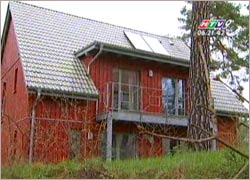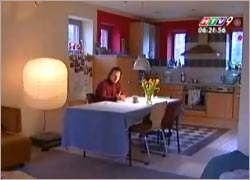Germany: Development of
Currently, Germany has made active efforts in conserving energy by recent changes in the Construction Law, which lists energy conservation standards in construction, with the development of the type ". Passive home ", an energy efficient home.
This particular type of house has solar panels, windows with 3 insulation layers, and a unique ventilation system, recycling capital and heat loss prevention. Architect designed " Passive House ", Oliver Jirka, said the most important advantage of this type of house is the elimination of conventional heating methods due to optimal insulation.
Jirka's house in Borgsdorf, near Berlin, is surrounded by a sealed air cushion, helping to keep the heat inside the house. The indoor air is automatically ventilated through a system of 150m long underground pipes, which circulates the air and maintains a constant temperature of about 8 ° C. Additional heat and space between the glass panels are filled with Arargon gas.
Although construction costs are higher than conventional designs, but according to Jirka architect, it saves significant heating and hot water costs, with only about 50 euros a month.
About 6,000 houses or apartments across Europe have adopted the energy-saving design of " Passive Homes ". According to studies, the energy savings in these houses are up to 80%.


Outside and inside " Passive house " (Photo: HTV)
State budget
- 4 the opposite in Germany but few people know
- Vietnam-Germany signed a letter of intent on science and technology
- CMC obtained ISO certification for software development
- 16 weird facts about Germany
- November 9, 1989 - The Berlin Wall collapsed, Germany united
- Interesting facts in Germany
- Germany: Detecting ancient battlefields with 100 bodies
- From 1-8: Germany enforces a ban on smoking
- Video: A close-up of life inside the fetus
- A bunch of abandoned Nazi bunkers 70 years after World War II
- History of currency development
- The formula helps plants live longer
 Norway built the world's tallest wooden tower
Norway built the world's tallest wooden tower Kremlin
Kremlin Ashurbanipal: The oldest royal library in the world
Ashurbanipal: The oldest royal library in the world Decoding the thousand-year construction of Qin Shihuang shocked the world
Decoding the thousand-year construction of Qin Shihuang shocked the world